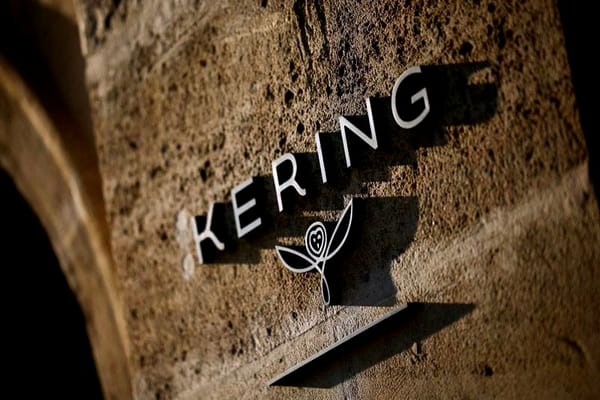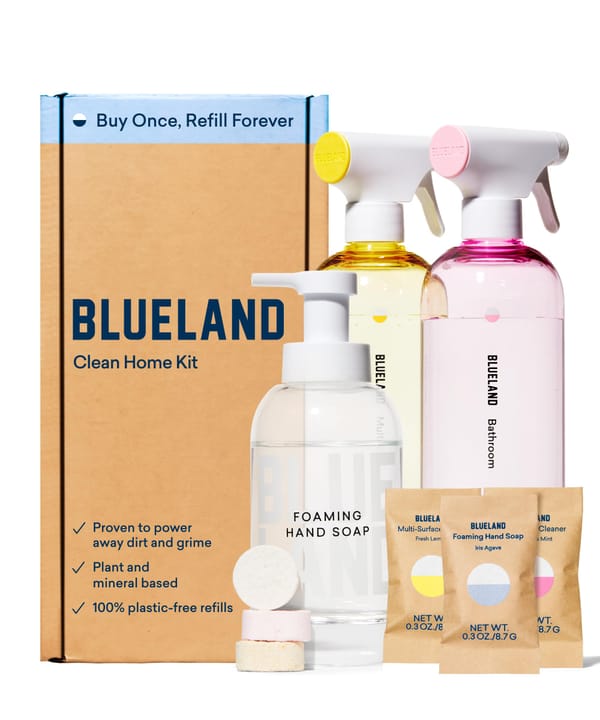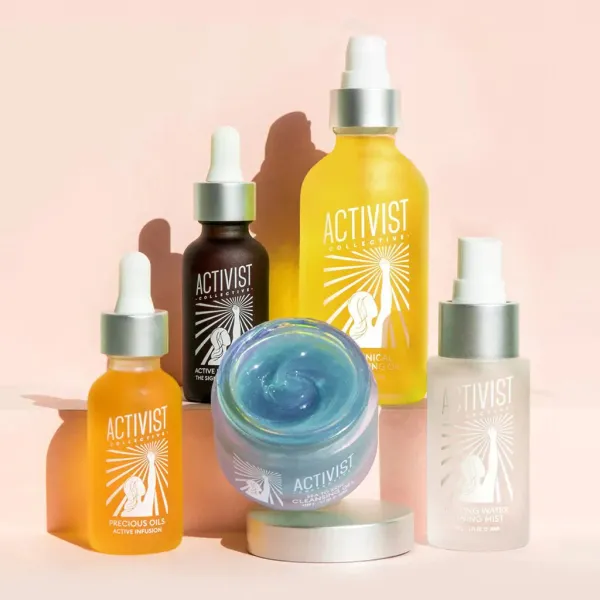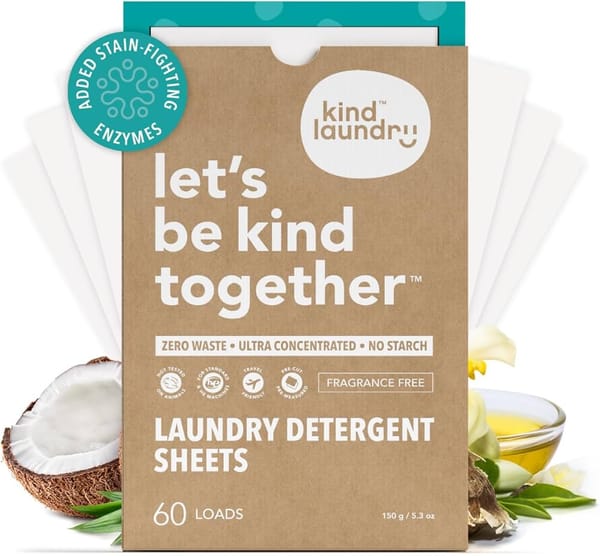10 Easy Ways to Make Your Home More Eco-Friendly

Sustainability starts at home. Households account for nearly 20% of global carbon emissions, making our individual choices crucial in reducing our environmental impact. The good news? You don’t need to overhaul your entire lifestyle to make a difference. Small, conscious swaps in your everyday routine can lead to significant benefits for the planet—and your wallet.
If you’re ready to create an eco-friendlier home, here are 10 easy swaps that will help you live more sustainably.
Swap Single-Use Paper Towels for Reusable Cloths
What’s the problem: Paper towels contribute to deforestation and excessive waste, filling landfills with unnecessary debris. The average household uses 80 rolls of paper towels per year, which adds up quickly in both cost and environmental impact.
The Alternative: Opt for reusable cloths or bamboo-based alternatives. Item's like Swedish Dishcloths offer compostable and machine-washable options that are highly absorbent and long-lasting.
Tip: Old T-shirts or dish towels can also be cut into reusable cleaning rags—an affordable and waste-free alternative!
Swap Plastic Bottles for a Water Filter
What’s the problem: Single-use plastic bottles are one of the biggest contributors to plastic pollution. A simple and effective swap is investing in a high-quality water filter and a reusable bottle. Whether you choose a charcoal stick filter, an under-sink filtration system, or a simple Brita pitcher, you'll be reducing plastic waste while ensuring cleaner drinking water.
The Alternative: Invest in a high-quality water filtration system and a reusable water bottle. Brita, Berkey, and PUR offer excellent at-home filtration options, while Hydro Flask make durable, insulated bottles perfect for on-the-go hydration.
Tip: If you're concerned about fluoride or heavy metals, consider a reverse osmosis system for the cleanest water possible.
Swap Conventional Cleaning Products for Eco-Friendly Alternatives
What’s the problem: Many conventional cleaning products contain harsh chemicals that pollute water systems and contribute to indoor air pollution. Switching to eco-friendly, non-toxic cleaners or making your own with simple ingredients like vinegar, baking soda, and lemon can make a huge difference for both the planet and your health.
The Alternative: Use eco-friendly, non-toxic cleaners like Blueland, Branch Basics, and ECOS, or make your own DIY cleaner:
DIY All-Purpose Cleaner Recipe:
- 1 cup white vinegar
- 1 cup water
- Juice of half a lemon (for a fresh scent and added antibacterial properties)
- 10 drops of essential oil (e.g., tea tree or lavender for extra disinfecting power)
Tip: For tough grime, sprinkle baking soda before applying your cleaner for extra scrubbing power.
Swap Plastic Wrap for Beeswax Wraps
What’s the problem: Plastic wrap is not biodegradable and contributes to microplastic pollution. Instead, beeswax wraps provide a reusable and biodegradable alternative to keeping food fresh. They mold with the warmth of your hands and can be washed and reused for months.
The Alternative: Replace plastic wrap with reusable beeswax wraps like those from Bee’s Wrap or Etee. These wraps mold with the warmth of your hands and can be washed and reused for up to a year.
Tip: For a vegan alternative, try plant-based wax wraps made from candelilla wax.
Swap Synthetic Sponges for Compostable Scrubbers
What’s the problem: Traditional kitchen sponges are often made from plastic-based materials that shed microplastics into water systems. Consider switching to compostable sponges made from loofah, cellulose, or coconut husks. They are biodegradable and just as effective at scrubbing dishes and surfaces.
The Alternative: Use compostable sponges made from loofah, cellulose, or coconut husks. Brands like, Wild&Stone, and Full Circle offer sustainable options.
Tip: Boil your natural sponge in water every few weeks to disinfect and extend its life.
Swap Regular Light Bulbs for LED Alternatives
What’s the problem: Lighting accounts for a significant portion of household energy use. Replacing incandescent bulbs with energy-efficient LED bulbs can reduce electricity consumption by up to 80%, lowering your carbon footprint and electricity bill.
The Alternative: LED bulbs use up to 80% less energy and last 25 times longer. Brands like Philips, Cree, and GE LED offer energy-efficient lighting solutions.
Tip: Opt for smart LED bulbs with dimming capabilities to further reduce energy use.
Swap Chemical Air Fresheners for Natural Scents
What’s the problem: Many commercial air fresheners contain synthetic fragrances and volatile organic compounds (VOCs) that degrade indoor air quality. Instead, opt for natural alternatives like essential oil diffusers, soy-based candles, or simmering citrus peels and spices on the stove for a fresh, toxin-free home.
The Alternative: Switch to essential oil diffusers, soy-based candles, or DIY stovetop simmer pots.
Best Natural Air Fresheners:
- P.F. Candle Co. for soy-based candles
- Vitruvi for essential oil diffusers
- Grove Collaborative for non-toxic sprays
Tip: Simmer a pot of water with citrus peels, cinnamon sticks, and cloves for an all-natural fresh scent.
Swap Fast Fashion for Sustainable Home Textiles
What’s the problem: If you’re looking to refresh your home decor, avoid synthetic materials and fast-fashion home textiles. Choose sustainably sourced, organic fabrics for curtains, bedding, and upholstery. Linen, organic cotton, and hemp are durable and eco-friendly alternatives.
The Alternative: Choose organic cotton, linen, or hemp for curtains, bedding, and upholstery. Brands like Coyuchi, Parachute, and Boll & Branch offer ethically sourced, sustainable home textiles.
Tip: Shop second hand for furniture and textiles to reduce demand for new production.
Swap Plastic Trash Bags for Compostable Options
What’s the problem: Standard plastic trash bags take hundreds of years to break down. A simple yet impactful swap is choosing biodegradable or compostable trash bags, which decompose much faster and reduce plastic waste in landfills.
The Alternative: Use compostable trash bags like BioBag or Repurpose. These break down much faster than traditional plastic bags.
Tip: Reduce waste by composting food scraps, this cut down on the need for trash bags altogether!
Swap a Tumble Dryer for a Drying Rack
What’s the problem: Dryers consume a large amount of electricity, contributing to high energy bills and emissions. Whenever possible, switch to air-drying clothes using a drying rack or outdoor clothesline. Not only does this save energy, but it also improves the lifespan of your clothes.
The Alternative: Use a drying rack or outdoor clothesline whenever possible. Brands like Honey-Can-Do and Brabantia offer sturdy drying racks.
Tip: If you must use a dryer, wool dryer balls reduce drying time and static, making your laundry more energy efficient.
Your Next Steps Toward Sustainability
Starting to adopt a more sustainable lifestyle doesn’t have to be overwhelming. The key is to start small and slowly start to incorporate eco-friendly habits into your daily life. Each swap, no matter how small contributes to reducing waste, conserving resources, and minimizing your carbon footprint. By making thoughtful choices, you’re not only benefiting the environment but also promoting a healthier home for yourself and your family.
Remember, adopting a more sustainability focused lifestyle, is a journey, that everyone has a moral duty to start. By choosing one or two swaps from this list and commit to them. As they become second nature, continue exploring other eco-friendly changes. The more conscious choices we make, the bigger the collective impact we can have on our planet.



